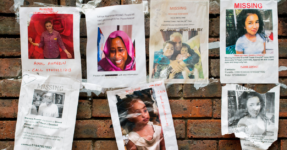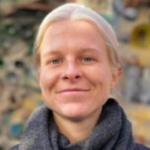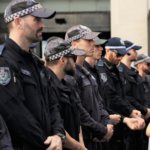Police Protect the Wealthy, While Targeting and Ignoring the Needs of the Poor

The urgency of the situation is palpable as police appeal to the public for information regarding a missing woman in the Snowy Mountains, specifically in Kosciuszko National Park, located almost 500 km southwest of Sydney in the Australian Capital Territory.
The missing woman, 48-year-old Lovisa Sjoberg, was last spoken to on 8 October 2024 but could have possibly been sighted one week later, on 15 October 2024, in the national park. When she could not be located or contacted, officers were notified to start an inquest into her whereabouts on 21 October 2024.
Police are concerned for the woman’s well-being due to her extended absence and concerning behaviour. Unlike tourists who have gone missing from remote areas in Australia, Lovisa has been known to frequent the areas around the Snowy Mountains, most notably the Kiandra area.
This story made headlines immediately — but would the same be said for an Indigenous woman in a remote community? Or would it be the same for a person, especially a minority, in an impoverished area with fewer economic resources? It’s sad to say that it is a resounding no in Australia.
The country’s police force has invested considerable resources into missing persons of an affluent demographic contrasted with doing the bare minimum, or nothing at all, for those from a poor economic background.
Affluent Areas vs. Poor Regions – Crime and Investigative Discrepancies
The discrepancies in the number of arrests, investigations into crime, and resources put towards affluent areas vs. non-affluent areas are astounding in Australia.
Although police have focused their efforts on less-affluent regions to increase the number of searches, thereby making it appear that their harsher legislative reforms and new initiatives are working, this has done little to improve the well-being of society as a whole. For example, of the 3.7 million searches in the last twenty years, 90% have not found anything of substance.
The oversaturation of police, coupled with discriminatory practices from the police force towards those in impoverished areas, especially minorities, leads to a misallocation of resources and efforts between socio-economic regions. The lack of proper funding and organisation in underserved areas can lead to delayed response times in missing persons cases, lack of resources, and lack of effort on the part of the police.
As we know, underserved communities, especially those in rural areas with minimal resources, might be more susceptible to high-risk behaviours than affluent areas, such as alcoholism and criminal activities. Therefore, even when a person is reported missing, the local police will consider the risk factors when coming up with their response.
This means that the police can make a ‘judgement’ call that impoverished areas are more prone to this behaviour, leading to a slower response time and potential issues with the duty of care. Especially for those who may be in and out of the system, whether that is the justice system or foster care, the duty of care can be skirted to other organisations, thereby passing the buck off onto someone else.
Furthermore, police jurisdictions across the country are responsible for responding to at least one missing person call per day, with NSW dealing with at least 25 daily reports. The MPU in each jurisdiction is the government agency that makes the call regarding the process of a missing person report. They are the ones who decide the ‘perceived seriousness’ of the incident.
“Perceived seriousness” is a key factor in the response to missing person reports. It refers to the subjective judgement of the MPU about the level of risk or danger a missing person might be in. This perception can lead to a judgement call that could result in an egregious mistake. If a person in a low socio-economic community already has a ‘high risk’ lifestyle, their missing persons’ case might not be taken as seriously as that of an affluent member of society, where it would be out of character for them to go missing.
In addition, the MPUs in each state lack unity, as each of the eight Australian states has its own distinctive territory and state legislation, leading to a lack of consistency in legal proceedings.
Lastly, there is very little research done about Indigenous missing persons, meaning that the Australian government and police forces need more information to identify risk factors and lead a more successful unit. Research must include how to prevent young persons from going missing in Indigenous communities, identification of risk factors for adults, and how support services can be expanded.
The Aftermath – Rural Australia vs. Affluent Communities
The Indigenous population has a disproportionately high rate of violence and homicides compared to white Australians, notably affluent citizens who have access to more resources and whose communities haven’t been ravaged by the effects of alcoholism and addiction.
Despite accounting for less than 2% of the entire country’s population, the Indigenous victim homicide rate was 9 per 100,000 individuals during 11 years. In contrast, the rate for non-Indigenous peoples was between 1.3 and 1.8 per 100,000 persons.
Along with the high number of Indigenous victims compared to the total population, there were disturbing trends highlighted that showed how socio-economic and geographical factors can come into play when it comes to offending and policing.
In rural, impoverished communities, like remote areas in Queensland, Northern Territory, and Western Australia, little has been done to curb the ever-rising number of missing persons who never make it back to their homes. There has been a 17% increase in the number of Australians reported missing in the last decade, with 2,500 classified as long-term missing.
Families of those who have gone missing have stated, ‘Our missing young people don’t get the same recognition that other people get when they go missing’, as is the issue with Clinton Lockyer’s case. Relatives of missing Aboriginal youths have stated that racist stereotypes can influence the amount of attention the case receives — and the amount of police effort that goes into finding the missing person.
These missing cases attract less attention and funding than those from affluent areas, and they might be underreported or misreported from the jump. Some of the young men who have gone missing in remote areas over the last few years have been classified as “missing people” rather than victims of suspected homicides.
In contrast, resources are consistently pushed towards affluent areas that often attract more attention than extremely rural villages in the bush. The NSW Government, combined with the NSW Police Force, announced a $1 million reward for information in regards to the disappearance of Stephen Lapthorne and Michelle Pope from the North Shore of Sydney almost fifty years ago. Despite the ever-growing number of missing persons cases in the time between then and now, the police force thought it would be a wise way to spend money and resources investigating a 50-year-old cold case of two missing people last seen in August 1978. They were from one of the most affluent areas in Sydney — the North Shore.
Furthermore, NSW Police offered a $500,000 reward to solve the cold case of Pauline Sowry, a woman who went missing in December 1993. Despite being declared deceased by the coroner in 2008, the New South Wales Police Force optimistically offered a $500k reward to anyone who could help them solve the missing persons’ case of the woman from the coastal city of Wollongong. Paulien Sowry was a young white woman from Wollongong, one of the most economically prosperous areas less than 90 minutes from Sydney.
Another similar interesting allocation of funds is about the 1975 cold case of Julie Garciacelay, a 19-year-old who was last seen in July 1975 in her North Melbourne flat. Instead of diverting resources, funds, and attention to new missing person cases from areas that require awareness, the Victorian coroner has continued working on her case, paired with a new podcast series regarding the woman’s disappearance and murder. Julie was a young white teenager from California who moved to Southbank, a predominantly middle-class neighbourhood in the top 20% of Melbourne’s economy.
The amount of money, media, and resources given to cold cases for missing persons — notably, affluent white women — are higher than current cases for those from less affluent areas. How can the police expect any real change to be made when they choose to care more about decades-old cold cases than people who are going missing in real-time from underserved communities?
Police Awareness, Media, and Resources Must Change
The police force across the country must change and do so fast to garner the public’s respect and redistribute resources where they matter. So, what can law enforcement and legislation do to see concrete changes in underserved Australian communities?
Addressing the allocation of resources, media awareness, and narrative of framing missing persons from low socio-economic areas vs. those in middle or upper-class urban neighbourhoods is essential.
Media is a crucial tool for changing society’s perception. Studies have shown that the public can learn about health and behaviours from the media. When it comes to missing persons, the media can change a society’s understanding of the crime, what goes unreported, and the ‘newsworthiness’ of different cases—i.e., affluent white women going missing are more newsworthy than minorities.
The “Missing white woman syndrome” is a term that indicates a disproportionate amount of media coverage of missing persons cases towards white females at much higher rates than males or minorities. Elements of racism, sexism, and colonialism were prevalent in news reporting, with minority victims ‘unworthy’ of the public’s sympathy or attention.
Will Australia change with the times and reallocate resources fairly to accommodate for the ravaging disparity between economic groups? So far, although money has been pushed to back initiatives aimed at reducing violence in impoverished areas, little has been done to help the ever-growing number of missing persons cases. Stay up to date with the latest news by following Sydney Criminal Lawyers.






